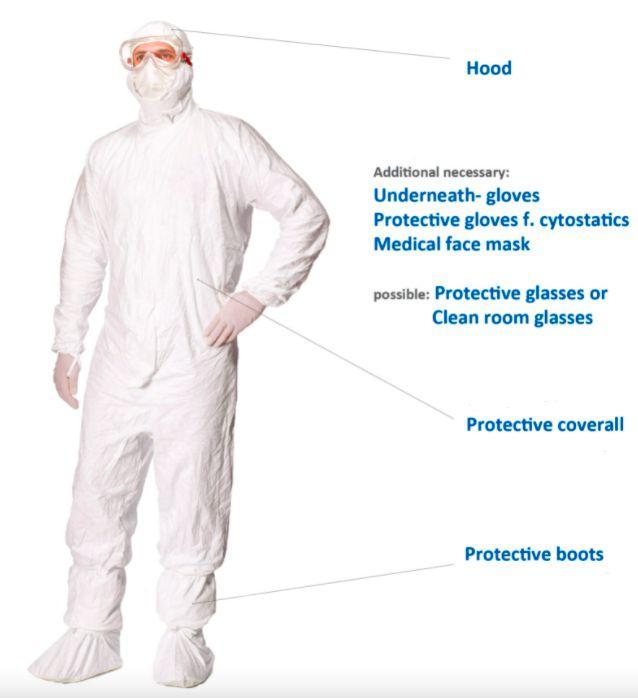Useful Tips for Safety in The Cleanroom

Cleanrooms provide controlled settings to minimize contaminating and harmful particles. Nevertheless, there are several useful strategies to consider when maintaining cleanliness and safety in the cleanroom environment.
Personal Protective Equipment
All employees should be required to wear proper Personal Protective Equipment (PPE).
- All staff should wear protective coverings such as hoods, special gowns or jumpsuits, boots or shoe covers depending on procedures at hand.
- When working with any chemicals, protective eyewear, such as safety goggles or glasses, should be worn at all times.
- Any practices which might expose the operators to broken glass or explosions require face masks or shields to be worn.
- The operators should always wear gloves in the cleanroom to prevent skin from contaminating particles and dangerous chemicals.
- Processes that might cause airborne hazards require the staff to wear a respirator. Remember that respirator use requires proper training and a special medical qualification.

Personal Hygiene
Personal hygiene is a significant factor when trying to minimize particle contamination.
- Staff must exercise good personal hygiene: shower, wash hands, and wear clean clothing.
- Operators cannot wear makeup or perfume in the cleanroom.
- Hair and facial hair should be covered to avoid hair oils making their way into the products.
- Once the gloves are on in the cleanroom, operators should not touch their face or hair with gloved hands.
- In addition, if you experience any symptoms associated with any physical illness, you should not be allowed into the cleanroom.
Dealing With Hazardous Chemicals
Many processes in the cleanroom will often involve the handling of possibly hazardous chemicals such as acids, solvents, bases, cryogenics, and carcinogens.
- All staff should receive appropriate training to understand how to use, handle and dispose of the materials safely.
- Should any staff come in contact with a hazardous chemical, the affected area should be rinsed with water for at least 15 minutes, and any affected clothes should be removed right away.
- If one sustains an injury from contact with a dangerous chemical, such as hydrofluoric acid (might burn through skin and bone), medical help is required immediately.
- Local HSE training (WHMIS) can be acquired to train all employees for identifying any potential hazard from chemical and eliminating the hazard.
- All chemical processes must always be conducted under fume hoods or in designated wet benches inside laboratories.
- Practice caution with chemicals: always clearly label containers, minimize quantities, store appropriately, clean up materials after use, and dispose properly in the designated waste stream.
Safety Protocols In The Cleanroom
There must always be proper protocols in place for different kinds of situations. Know where all the protocols and guides are and familiarize yourself with them. It is helpful to know the layout of your facility to recognize where the safety equipment such as safety showers, fire extinguishers, eyewash stations, emergency shut off and bypass switches are located. Such knowledge might save you precious time in an emergency situation. Moreover, it is essential to know what different signals and alarms indicate and which routes and procedures to follow if evacuation is necessary. Another critical guide to know is the gas cylinder safety protocol. Everyone should be familiar with gas monitoring equipment and the alarm, indicating hazardous air conditions.
These tips don’t cover everything. Both staff and employers should understand the necessary safety precautions and the role everyone plays in making the workplace safe. All workers should be trained on the safety protocols with monthly follow-ups. Following these essential safety tips will help eliminate many potentially dangerous situations.
GET IN TOUCH
Complete the form below to get in touch with our team.
